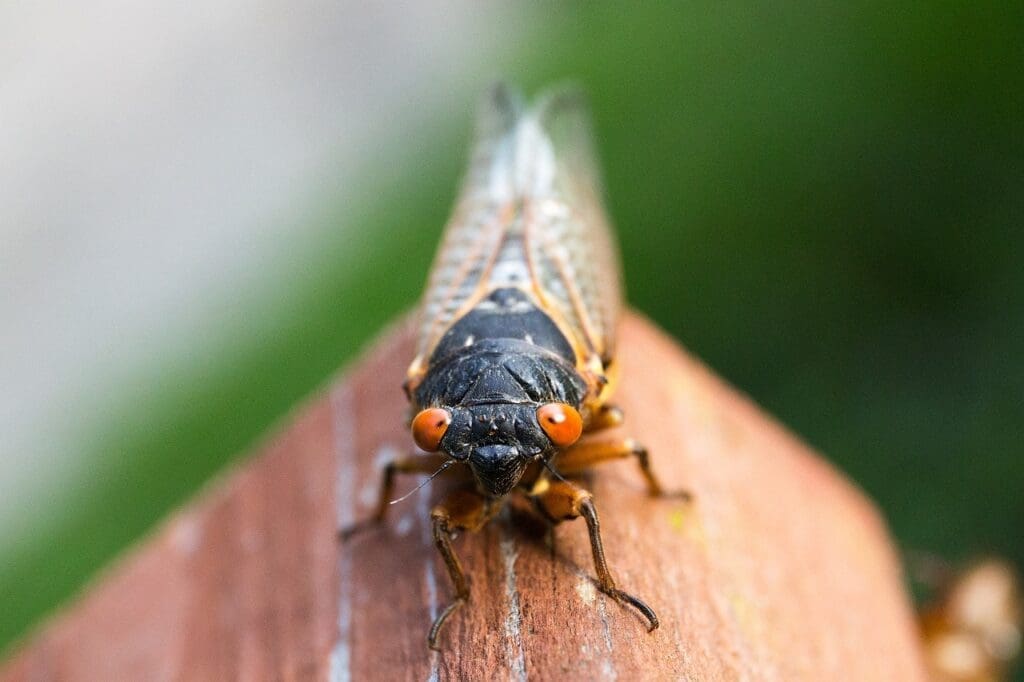
In 2024, the United States is set to experience a remarkable natural spectacle: a double emergence of periodical cicadas, where Brood XIII and Brood XIX overlap.
This event will see billions of cicadas emerging simultaneously in parts of the Midwest and South, creating an overwhelming chorus and a phenomenal sight.
How does this compare with cicada activity across Europe? Let’s explore the differences in cicada phenomena between the U.S. and Europe.

In Europe, cicadas are indeed present, but their behavior and impact are vastly different from the periodical cicadas in the U.S. European cicadas do not follow the same long-cycle, synchronized emergence patterns seen in the U.S.
Instead, most European species are “annual” cicadas, appearing every year without the massive, synchronized emergences typical of their American counterparts. While there are over 30 species across Europe, ranging from Spain to Greece, none exhibit the large-scale, synchronized emergence that defines periodical cicadas.
The most well-known among European cicadas is perhaps the New Forest Cicada (Cicadetta montana) in the UK, which is the only cicada native to Northern Europe and is notable for its rarity and elusive nature.
Unlike the overwhelming numbers seen in the U.S., the sightings of the New Forest Cicada have become so infrequent that conservationists fear it may already be extinct in Britain.
The scale and scope of cicada emergences in Europe are thus minimal when compared to the impending 2024 double emergence in the U.S.

European cicadas typically do not create significant disturbances or draw widespread attention, mainly because their numbers are much smaller, and their life cycles do not lead to massive, simultaneous populations.
The double emergence in the U.S. is not just a curiosity but an important ecological event. It provides critical insight into the reproductive strategies and survival mechanisms of cicadas, particularly the phenomenon of predator satiation.
—> Read More: Travel Tips for Staying Safe in Europe
The sheer numbers during peak emergence years overwhelm potential predators, thus ensuring the survival of enough cicadas to propagate their species.

Planning a Trip To Europe?
We can help create your perfect itinerary!
- Worried you'll miss the hidden gems?
- How long should you stay in each place?
- What should you see and what to avoid?
- Should you rent a car, train it, or both?
In contrast, Europe’s cicada experience offers a quieter, more steady interaction with these insects, with a focus on individual sightings and species diversity rather than overwhelming numbers.
This difference underscores not only ecological and biological diversity between continents but also highlights the unique challenges and scientific interest each type of cicada emergence presents.
As the U.S. prepares for its extraordinary cicada event in 2024, it underscores the fascinating ways in which life adapts to its environment – through spectacular, periodic phenomena in one part of the world and through more subdued, annual cycles in another.
Hi, I’m Jack Baumann – founder of Guidester. I’ve spent over 15 years living and traveling throughout Europe, and I created Guidester in 2014 to help others experience the best of what Europe has to offer. What started as a passion project has grown into a full-service travel concierge and tour company, designed to make your journey smoother, richer, and more meaningful.
Want to know more about my story? Click here to learn more about me.
👇Don’t forget to grab your free international travel checklist just below – it’s packed with essentials to help you feel fully prepared for your next adventure!
Jack Baumann
President of Guidester

The Ultimate Pre-Travel Checklist
Download ‘10 Crucial Things To Do Before Traveling Abroad’ to avoid mistakes and ensure a smooth trip; adapters and electronics, packing tips, foreign currency, phone plans, and more!











